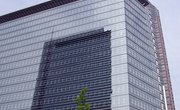
Investors use capitalization rates to determine the value of a property relative to the net operating income that it produces. Although a cap rate for a property can be easily calculated by dividing a property's NOI by its purchase price, in many cases investors use the cap rate to determine pricing. By dividing a property's NOI by a given cap rate, you can find its market value. To do this, you need to determine an appropriate capitalization rate by using either the summation method or one of the other alternatives.
The Summation Method
In the summation method, investors add up both their desired return and adjustments to come up with a capitalization rate at which a property makes sense for them. For instance, they may start with a desired return of 2 percent on a riskless investment like a CD or treasury bill, then add a 4 percent risk adjustment, a 1.5 percent adjustment for the lack of liquidity of real estate, and a 4 percent adjustment for the amount of management that they would have to do to come up with an 11.5 percent cap rate. From this, they would then adjust the rate downwards to adjust for the investment's tax benefits coupled with the chance of appreciation. If each of those two benefits are worth 1.5 percent, this would yield an 8.5 percent cap rate.
Problems with the Summation Method
The key problem with the summation method is that it is completely arbitrary. Each investor can choose their own personal criteria for the adjustments which, although it may make sense to them, could be completely out of alignment with the market. Odds are that the seller of an asset will disagree with a cap rate obtained by summation, and will come up with a higher value. With this in mind, other methods can be a more effective way to find a capitalization rate that is more in line with a given market.
The Comparison Method
The most popular method to determine cap rates is through the comparison method. In this, investors look at comparable sales on the market in a similar period of time to determine the market's general value. They then adjust that value for the specifics of a given property. For instance, if a market's average cap rate is 10 percent, and the property under consideration is superior, they may adjust the cap rate down slightly.
The Band of Investment Method
In the band of investment method, investors add up their costs of capital and desired returns to find an appropriate capitalization rate. For instance, if an investor can get a first mortgage for 70 percent of the value of a property at 6 percent and desires a 15 percent return on their 30 percent equity investment, the band of investment method would yield a desired cap rate of 8.7 percent. This is calculated by adding the pro rata shares of the two yields: 70 percent of 6 percent plus 30 percent of 15 percent.
References
Writer Bio
Solomon Poretsky has been writing since 1996 and has been published in a number of trade publications including the "Minnesota Real Estate Journal" and "Minnesota Multi-Housing Association Advocate." He holds a Bachelor of Arts, cum laude, from Columbia University and has extensive experience in the fields of financial services, real estate and technology.

